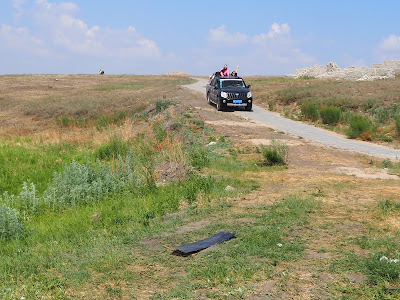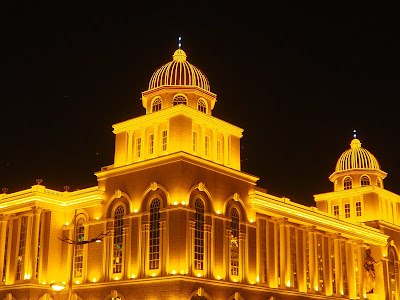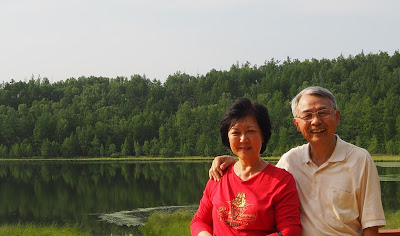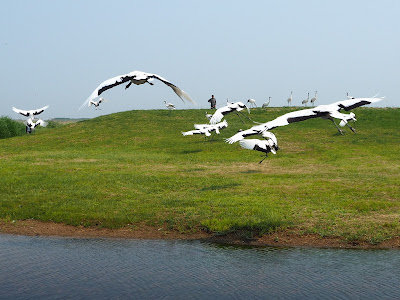The farthest destination of our trip was the northwest frontier of Inner Mongolia - Manzhouli, a city just borders Russia.
Earlier, the tour itinerary also included an excursion to an outpost at the Inner Mongolia/Russia territorial border - a dividing line demarcated by a high chain-linked fence. The excursion started with a ride in a pick-up to a small river. After crossing a tinny wooden bridge, we proceeded to walk on a timber-decked boardwalk laid over an open field. The short walk ended at another small river. We then boarded a small boat and after 10 minutes landed at an uninhabited open field overgrown with reeds and small trees. A banner is erected next to the high chain-linked fence which reads "You have reached the border. Do not attempt to cross the border". I find this excursion rather weird - a tour to a no man land! Probably, China and Russia should learn from Thailand and Myanmar for what they come up at the border at the Golden Triangle - create border town with shopping outlets and food outlets so that there is reason for visitors to visit the border (Read here).
 |
This outpost at the China side is an equivalence of the
fire tower of the Great Wall.
|
************************************************
Manzhouli is best described as a City of Light. The installations of all the lighting hardware at the exterior of the buildings in town are funded by the local authority. The latter also pays for the electricity bills of these exterior lights. This is indeed a genius idea of the local authority to lure visitors to this city. Besides the lights, the other major attraction is the Russian Doll Playground Theme Park. It boasts of hosting 20,000 visitors a day during peak season!
 |
| Well lighted up city. |
 |
| Lighted up Russian Doll Playground Theme Park. |
 |
| Lighted up Russian Doll Playground Theme Park. |
Clearly, our tour company opted the cheaper option by not taking us into the Theme Park, ostentatiously because of the so-called high entrance fee. They opted for the short cut by stopping the tour bus just outside the Theme Park for photo taking only!
 |
Russian influence is evident just by looking at the many buildings in Manzhouli.
|


















































